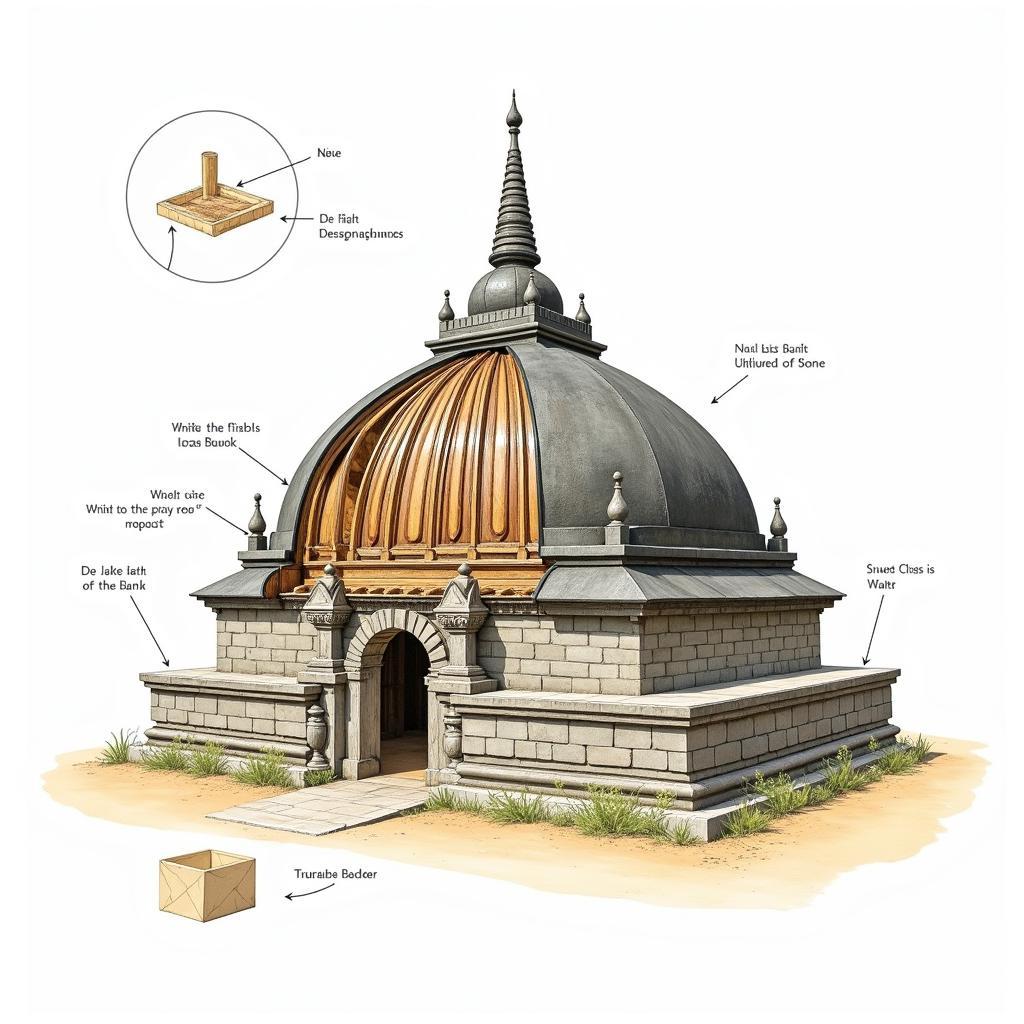ASEAN domes represent a fascinating blend of cultural influences, historical significance, and architectural innovation. From ancient temples to modern marvels, these structures offer a unique glimpse into the rich heritage and dynamic present of Southeast Asia. This article delves into the captivating world of ASEAN domes, exploring their diverse forms, functions, and the stories they tell.
Southeast Asia’s architectural landscape is punctuated by a stunning array of domes, each reflecting the region’s diverse cultural heritage and historical influences. These architectural marvels, often found atop religious structures, palaces, and government buildings, speak volumes about the ingenuity and artistry of the people who built them. Let’s embark on a journey to explore the captivating world of ASEAN domes.
The Symbolism and Significance of Domes in ASEAN
Domes in ASEAN often hold symbolic meaning, representing the heavens or the cosmos. They can also signify power, authority, and spiritual aspiration. For example, the golden domes of mosques symbolize the Islamic faith’s prominence in countries like Malaysia and Indonesia. In Buddhist countries like Thailand and Myanmar, the shimmering domes of pagodas and temples represent enlightenment and the pursuit of Nirvana.
Exploring the Architectural Styles of ASEAN Domes
The architectural styles of ASEAN domes are as diverse as the region itself. Influences from India, China, the Middle East, and Europe have shaped the unique dome designs found throughout Southeast Asia. From the onion-shaped domes of Islamic architecture to the bell-shaped domes of Buddhist temples, each style tells a story of cultural exchange and adaptation.
Materials and Construction Techniques of Traditional ASEAN Domes
Traditional ASEAN domes were often constructed using locally sourced materials such as timber, brick, and stone. Skilled craftsmen employed intricate techniques passed down through generations to create these awe-inspiring structures. For example, the construction of the Borobudur temple in Indonesia, with its numerous bell-shaped stupas, is a testament to the sophisticated engineering skills of ancient Javanese builders.
 Traditional ASEAN Dome Construction
Traditional ASEAN Dome Construction
Modern Interpretations of ASEAN Domes
Modern architects in Southeast Asia are reinterpreting traditional dome designs, incorporating contemporary materials and technologies to create innovative and sustainable structures. These modern domes often serve as iconic landmarks, showcasing the region’s architectural prowess and cultural identity. The ASE membership benefits can be seen in the collaborative efforts to preserve and promote these architectural wonders.
How are ASEAN Domes Preserved?
Preserving these historical and cultural treasures is a significant undertaking. ASEAN countries are actively involved in conservation efforts, employing various strategies to protect these architectural gems from the ravages of time and the elements. These efforts often involve meticulous restoration work, using traditional techniques to ensure the authenticity of the structures. alimentos aseo ferreteria electrodomésticos can be related to the preservation efforts as they represent the daily life and culture around these architectural sites.
What is the future of ASEAN dome architecture? The future of ASEAN dome architecture lies in balancing preservation with innovation. As cities modernize, architects are challenged to incorporate these traditional forms into contemporary designs. This will ensure that the legacy of ASEAN domes continues to inspire future generations. You can learn more about the architectural landscape in resources like asean article 2018. The agencia de aseo domestico plays a vital role in keeping the areas surrounding these architectural gems clean and presentable. The rise of companies like ase usi global illustrates the increasing global interest in ASEAN’s cultural heritage.
In conclusion, ASEAN domes stand as testaments to the rich cultural heritage and architectural ingenuity of Southeast Asia. From ancient temples to modern landmarks, these structures continue to inspire awe and wonder, offering a unique window into the heart and soul of the region. Their preservation and continued evolution will ensure that the legacy of ASEAN domes endures for generations to come.
FAQ:
- What are some of the most famous ASEAN domes?
- What materials are traditionally used to construct ASEAN domes?
- How do ASEAN countries preserve their historical domes?
- What is the symbolic significance of domes in Southeast Asian culture?
- How are modern architects incorporating traditional dome designs into contemporary buildings?
- Where can I find more information about ASEAN architecture?
- What role do domes play in the religious landscape of ASEAN?
When you need assistance, please contact Phone Number: 0369020373, Email: aseanmediadirectory@gmail.com Or visit: Thon Ngoc Lien, Hiep Hoa, Bac Giang, Vietnam. We have a 24/7 customer care team.

